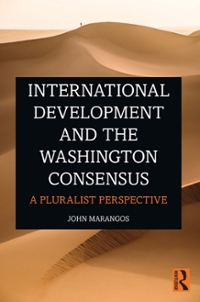Could someone help by explaining step by step and the calculations needed in each step and answers
Due Wednesday 11/2. If the United States decided to try to reduce carbon dioxide emissions in order to slow global warming, one policy it might use would be a tax on fossil fuels. A central question that has been a subject of very intense debate is how damaging a tax like that would be to the U.S. economy. Believe it or not, in part the debate really boils down to an argument about what people's preferences look like. This exercise will explore why. To keep the problem manageable, we'll focus only on households and will ignore the fact that energy is also used by firms. Also, we won't worry about the fact that there are lots of individual households: we'll use one big aggregate household to represent everyone together. Suppose households buy two goods: energy, E, and all other goods, O. In 2022, total household spending, M, was about $17 trilliont($17,000 billion). About $850 billion of that was on energy (so Pele = $850 billion) and $16,150 billion was on everything else (P.Q. = $16,150 billion). For convenience, we'll let the 2022 prices of energy and other goods, Pe and Po, both be $1; formally, that just means we're choosing the units of E and O so that one unit of each costs exactly $1 in 2022. Using the prices and the initial expenditures, Q and Q. are initially 850 billion units and 16,150 billion units, respectively (units, not dollars). 1. Suppose that household preferences between goods can be represented by a Cobb-Douglas utility function. The general form of the function and the corresponding demand equations are shown in the table below: Utility Demand E Demand O U = Q . Q! 9 Q. = 9 . M (1 -9) . M Po Use the data given earlier in the problem to determine the appropriate value of g. Then, derive the expenditure function for a household with these preferences. 2. Suppose the government imposes a 25% tax on energy so that Pe rises to $1.25. How much does energy demand decrease? What happens to the demand for other goods? How much revenue does the policy raise? What is the compensating variation? Setting aside climate impacts and comparing only the CV and revenue raised, how costly is the policy overall? 3. Now suppose that the utility function in part (1) is wrong and that households really regard energy and other goods as perfect complements. In particular, suppose that they always want exactly b units of O for each unit of E. Using the data at the beginning of the problem, please determine the value of b. Then use the information about preferences and the budget constraint to derive the corresponding demand equations. Be sure to show the steps in the derivation, not just the result. 4. Suppose the government imposes the 25% tax on energy from part (2) when consumers have the preferences from part (3). How much does energy demand decrease? What happens to the demand for other goods? How much revenue does the policy raise? What is the CV? (Calculate the C.V. in this case by finding the increase in income needed to allow consumers to buy their original amount of E and O and explain why that approach is appropriate.) Again setting aside climate impacts and comparing only the CV and revenue raised, how costly is the policy overall? 5. A lot of the debate over climate and energy policy is essentially about whether preferences look more like part (1) or part (3). Compare the results from (2) and (4) and explain why the form of household preferences is important for climate change policy. Don't just write down the numbers, think about what they really mean for the policy. Additional Information Compensating Variation Web note giving graphical and numerical examples of compensating variation calculations. Other Resources on Compensating Variation Additional information on expenditure functions and compensating variation. Site Index | Zoom | Admin Revised 10/27/2022 MacBook Air 80 DII DD A PSC F1 F3 FA F6 F7 F8 F9 F 10 F12 # CA 2 3 4 5 6







